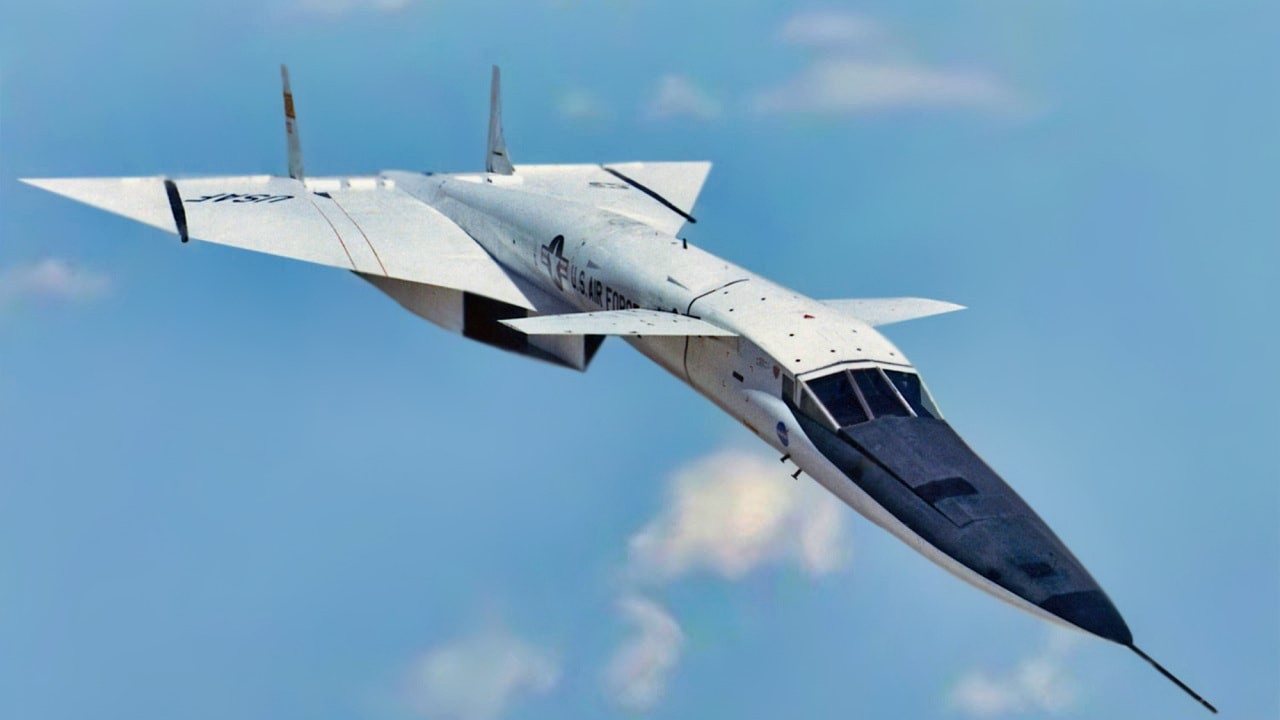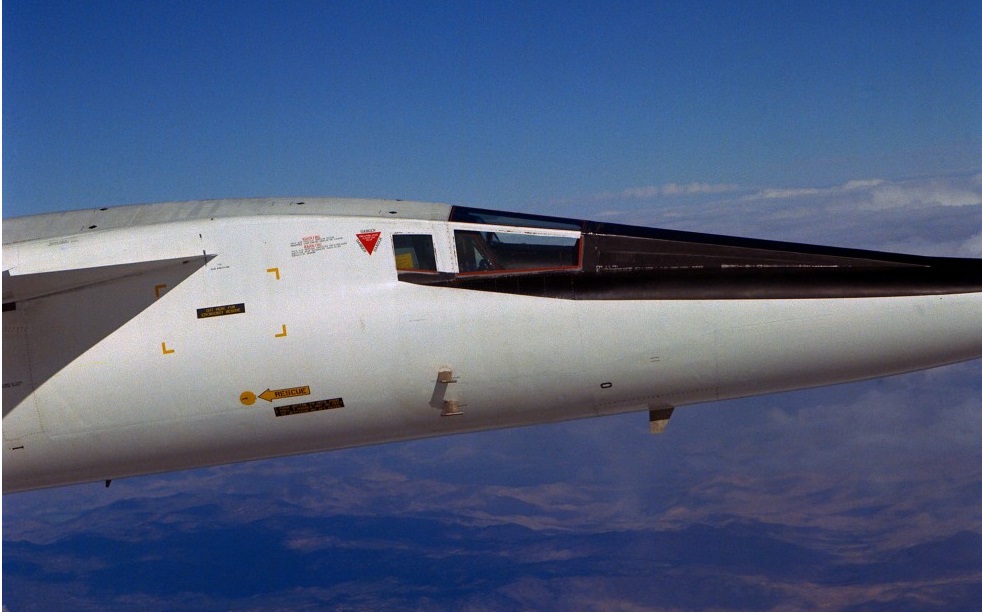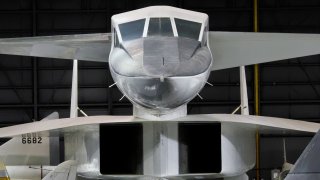XB-70: The Mach 3 Air Force Bomber That Never Had a Chance
The XB-70 was designed to be larger and faster than the B-52. It was 196 feet long, 31 feet tall at the tail, with a 105-foot wingspan, and powered by six turbojet engines.
Summary: The XB-70 was designed to be larger and faster than the B-52. It was 196 feet long, 31 feet tall at the tail, with a 105-foot wingspan, and powered by six turbojet engines.

-It could reach speeds of Mach 3.1 and fly at altitudes over 70,000 feet.
-A sleek, futuristic-looking bomber jet with a large delta wing design, six turbojet engines in a cluster underneath the fuselage, and a length of 196 feet.
-The aircraft is seen in flight, showcasing its impressive wingspan and powerful engines, against a backdrop of a clear blue sky at high altitude.
The Supersonic Journey of the XB-70 Valkyrie: Size, Speed, and Legacy
The six-engined XB-70 Valkyrie was designed for the United States Air Force during the Cold War to be capable of cruising for thousands of miles at Mach 3+ while flying at 70,000 feet (21,000 m) – and essentially immune to interceptor aircraft.
The sole surviving prototype is now maintained in the collection of the National Museum of the United States Air Force at Wright-Patterson Air Force Base (AFB), Dayton, Ohio. While it hasn't flown since it arrived at the base on February 4, 1969, the massive aircraft was moved out of the museum's Research & Development Gallery last month for a good cleaning!
XB-70 Facts You Need to Know: A 3-Minute Explainer
Here are some high flying facts about the North American XB-70 Valkyrie:
It is Bigger Than a B-52 and Faster
The United States Air Force envisioned the need for a larger and faster aircraft than the Boeing B-52 Stratofortress. North American Aviation (NAA) beat out Boeing during the design phase, and in 1958, it was awarded a development contract to develop a bomber that could fly at high altitudes at speeds of Mach 3 and would be capable of carrying nuclear and conventional weapons.
The XB-70 had a length of 196 feet, a height at the tail of 31 feet, and an estimated maximum gross weight of 521,000 pounds. Its delta wing had a span of 105 feet with six turbojet engines side by side in a large pod underneath the fuselage. As initially planned, the XB-70A – which was powered by six General Electric YJ93s of 30,000 lbs. thrust each with afterburner – was to have a maximum speed of Mach 3.1 (2,056 miles per hour, or 3,309 kilometers per hour).
The Speed Came At a Price
The XB-70 met the Strategic Air Command (SAC) goals and was designed to fly at Mach 3 – three times the speed of sound – and higher than 70,000 feet (21,000 kilometers). According to the Federation of American Scientists, the concept called for the entire mission (including return) to be flown at Mach 3. While it could outrun any interceptor, it was vulnerable to Surface-to-Air Missiles (SAMs) of the 1960s vintage.

The issue was "Its straight and level trajectory would have been an easy course to plot and intercept," FAS warned "Further, the technology that made Mach 3 possible yielded an airframe with a large RCS that added to the effectiveness of SAMs against the XB-70.
A Contest Selected Its Name
According to an Air Force Times article published on New Year's Day in 1960, "Valkyrie" was selected following a SAC naming contest. More than 20,000 entries were submitted.
As previously reported, "The Valkyrie were maidens of extreme beauty, who ranged the heavens on their steeds, choosing those who were to die in battle and bearing the fallen heroes back to Valhalla." It was thus a fitting name for the aircraft!
ICBMs Were Cheaper
The XB-70 was both ahead of its time, but also too late. As noted, it would have been vulnerable to SAMs, while less costly, nuclear-armed ICBMs (Intercontinental Ballistic Missiles) were also beginning to enter service. The XB-70 design offered payload flexibility but not mission flexibility – and while there were considerations to employ it as a reconnaissance aircraft with a bomber strike capability, as the RS-70, it was determined it wouldn't be ideal in either role. The Air Force already has the far superior SR-71 Blackbird filling the reconnaissance role!
Supersonic Test Vehicle
As noted by the National Museum of the United States Air Force, while the program was canceled, two prototypes (AV-1 and AV-2) were ordered and employed as test vehicles – carrying out 129 flights between 1964 and 1969. Those flights generated a plethora of data on large supersonic aircraft. However, AV-2 was lost in June 1966 after an F-104 collided with the prototype XB-70 in mid-air, killing the F-104 pilot Joe Walker of NASA and XB-70 copilot Major Carl Cross of the Air Force, while North American pilot Al White was able to eject but as badly injured in the incident.

Less than three years later, the surviving prototype was flown to the Air Force Museum – later renamed the National Museum of the United States Air Force – where it is now on display, and following the recent cleaning, looking better than ever!
Author Experience and Expertise: Peter Suciu
Peter Suciu is a Michigan-based writer. He has contributed to more than four dozen magazines, newspapers, and websites with over 3,200 published pieces over a twenty-year career in journalism. He regularly writes about military hardware, firearms history, cybersecurity, politics, and international affairs. Peter is also a Contributing Writer for Forbes and Clearance Jobs. You can follow him on Twitter: @PeterSuciu. You can email the author: [email protected].
All images are Creative Commons.


